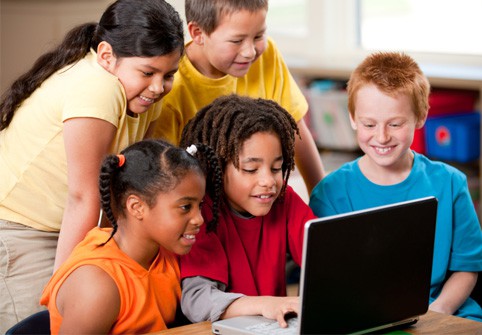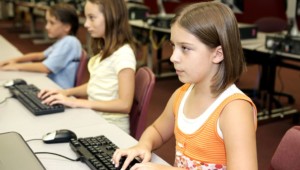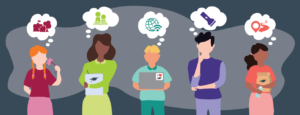The Renaissance of Public Education

By: Linda Pruett
Public education is in a renaissance. Some districts are on the cutting edge of this transformation, others are sitting back, concerned about funding and just not prepared to attack this new so-called digital revolution in education. I was privileged last week to be a participant with a small group of superintendents from across the nation as we discussed the things that had worked in our various journeys into digital learning, and more importantly, we documented the barriers that were holding our districts back from fully realizing the potential of digital learning. The Department of Education is pulling all of our thoughts together in their ConnectED project; but I was profoundly shocked to hear that only 17 percent of the districts nationwide are even making strides toward digital learning.
Digital learning is not just about technology. It is about personalizing the education of every child. About creating personal learning plans to ensure all kids succeed and learn the key concepts necessary to be globally competitive in the 21st century, and to be able to lead us into that world as they grow to become the next generation of doctors, educators, legislators, and leaders in careers that don’t even exist yet. The capabilities of truly personalizing student learning are still in the pioneer stage, and some of us are out there trying to wrap our heads around how this might look and feel, giving our state education departments are still guiding us in many ways based on the model from the 40’s and 50’s of what education looked like back then. This renaissance will take place. The question is whether public education will keep up or be left in the dust.
Personalized learning is at the core of John Hattie’s research. In his book, Visible Learning, he notes some of the very top “influences and effect sizes” are self-report grades, formative evaluation, and micro-teaching. These all reflect personalized learning. In fact, in the number one “influence and effect size, “ self-report grades, he further elaborates that when students are involved, and even take the lead, in setting goals for their learning, this has the greatest effect for the growth in student achievement. This is where we must be. This is our moral imperative – to encourage and facilitate our students to examine their own strengths and weaknesses academically, to analyze their profiles of their individual capabilities and life goals, and to be deeply involved in their own learning.
How can personalized learning take place in public education today – with constraints such as the standard academic day, the requirements for one year’s attendance, the Carnegie unit, the way districts are reimbursed for student learning through attendance hours. This is an elephant that cannot be eaten except for one bite at a time. At St. James Schools, in rural Missouri, we have chosen to find a way to get a laptop for every students, grades 6-12. In a community where our poverty level is at 62 percent (based on Free and Reduced meal data), our students must be provided a tool to level the playing field for all. For our district, this is the first step toward personalized learning.
We have not arrived. In fact, all we have done is dive into a very deep pool and attempt to keep from drowning. It has been very exciting, very demanding, and well worth it all. We spent the 13-14 school year dealing with first-order change. We had technology issues initially, and our IT department resolved, and continues to resolve, any barriers to learning that are IT-related. But at the core of personalized learning is second-order change. Second-order change, according to Project RED, is transformational change in education. Second-order change will take the district years to achieve, and we are okay with that. We are on the road to that change, and it is so exciting to be on that road!
Linda Pruett is currently an Assistant Superintendent in St. James, MO. In her 26th year in education, Throughout her career, Linda has focused on educational technology. The district currently has a 1:1 laptop model grades 6-12. Follow Linda on Twitter at @llpruett







0 Comments
Leave a Comment
Your email address will not be published. All fields are required.